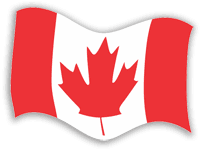|
“The Americans are our best friends,” one Canadian politician
told the House of Commons early in the 1960s, “whether we like
it or not.” Whether we like it or not. In other words, Canadians
had no choice but to be close to the Americans, the economic,
military and political superpower.
That comment may not have come out quite the way the politician
intended, but he was right. Ever since World War II, Canada had
come to depend on the United States for defence, for the
strength of its economy, even for culture. Canada had shed most
of its British past; now it was North American.
It was the war that made this clear. When Britain and France
suffered defeat in Europe in May and June 1940, Canada suddenly
found itself Britain’s major ally and, if Britain fell to
Germany, exposed to German attack. The answer was obvious: a
defence alliance with the still-neutral United States, and in
August 1940, Prime Minister Mackenzie King and President
Franklin Roosevelt created the Permanent Joint Board on Defence.
This was the first ever defence agreement between the two
countries, and it was permanent. Soon, with Japan in the war,
the U.S. had troops stationed in Canada, building the highway to
Alaska.
Then in 1941, Canada’s wartime economy was in peril. More goods
had to be imported from the U.S. to produce weapons for Britain.
But the British were broke and could not pay. Again King and
Roosevelt met and struck an economic deal: the Americans would
buy more from Canada, balancing Canada’s spending in the United
States. This was great generosity, but now Canada’s economy,
like its defence, was tied to the U.S.
Everyone recognized that the war had to be won, but many
preferred a Canada that was less tied to the Americans and more
involved with Britain. But by the time of the peace in 1945,
Britain was weak from years of struggle and could not pay for
Canadian goods. This time the U.S. created the Marshall Plan to
help restore the European democracies and Britain, and Canada
negotiated the right to get American dollars for goods it
provided the allies. That saved the Canadian economy once more,
but it tightened the bonds between Washington and Ottawa.
It was the same on defence. The 1940 agreement, renewed in 1947,
became important once more when the Soviet Union turned from
ally to enemy. Soon the U.S. and Canada were building radar
lines across Canada to warn of a Soviet bomber attack; soon some
American troops again took up position in Canada; and by
1957-58, the air defences of the two countries were coordinated
in the North American Air Defence Agreement.
It all made sense, but many Canadians worried that Canada was
being dragged along with Washington’s global ambitions. When
Fidel Castro took power in Cuba in 1958 and turned the Caribbean
nation into a Communist state, Canada’s government tried to keep
open its lines to Havana. The Americans were unhappy and even
more so when the Soviet Union put nuclear missiles on the island
in 1962, and Canada did not lend immediate support. President
John Kennedy, furious at Prime Minister John Diefenbaker who had
refused to put the country’s air force on full alert, helped
drive his Conservative government from power and bring Lester
Pearson and the Liberal’s to power in a 1963 election.
But Pearson’s government, though it accepted nuclear weapons
from the U.S., also had its worries about American influence.
Canadian companies had been bought up in vast numbers by U.S.
firms, and finance minister Walter Gordon brought down a budget
in 1963 that announced curbs on U.S. investment. But the
Canadian media and businesses objected strenuously, along with
Washington, and within days, Gordon had to withdraw the budget
measures.
Canada had gone down the American road so fast and so far that
most Canadians could not even think of taking back their economy
or regaining control of their own defence. There really was no
choice. To defend Canada’s vast territory by themselves,
Canadians would need to spend huge sums; by cooperating with the
U.S., the costs were less, and moreover it made military sense
to defend North America jointly.
The North American economy, like defence, was integrated, and
Canada could sell its goods into the U.S., the world’s biggest,
richest market, and one that spoke English, just like (most of)
Canada. The Common Market was closing off much European trade to
outsiders, and Asia had not yet developed its economic power. In
truth, there was no economic option, and as a result Canadians
shared in the bounty of North America while their economy
boomed.
All they lost was their independence, something they had never
really had. Canada had gone from being part of the British
Empire and Commonwealth directly to being an American “colony.”
Historian J.L. Granatstein is the editor of The Canadian
Experience series and writes on Canada-U.S. relations, foreign
and defence policy, and political history.
Next Instalment: Anti-Americanism at its Peak
The Canadian Experience is a 52-week
history series designed to tell the story of our country to all
Canadians. Sponsored by Multimedia Nova Corporation and
Diversity Media Services partners, the series features articles
by our country’s foremost historians on a wide range of topics.
Past articles and author bios are available at
http://www.cdnexperience.ca. The Canadian
Experience is copyright ©2010-2011 Multimedia Nova
Corporation. |
List of
published "Canadian Experience" articles |
 #42 Even “Best Friends” Have Problems
#42 Even “Best Friends” Have Problems
